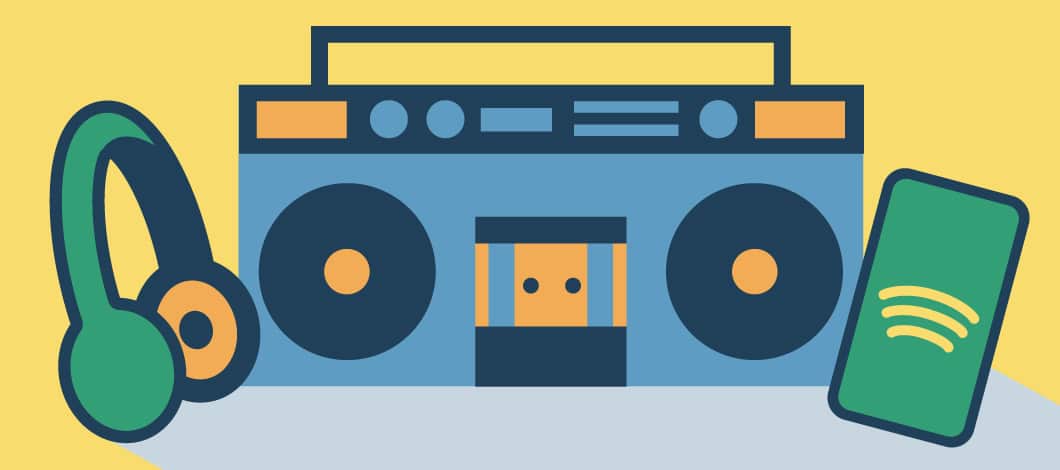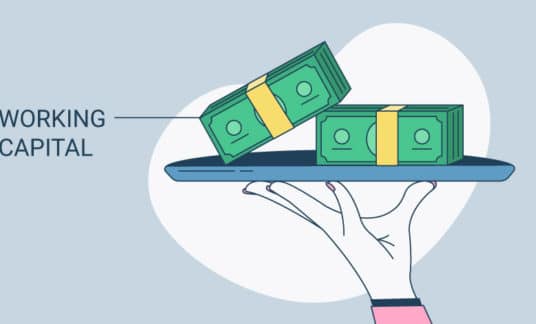Radio advertising costs vary depending on factors including region, air time, ad frequency and demand.
That said, investing in this form of advertising can effectively deliver your brand’s message, promoting your product or service in a memorable and compelling way. Whether you use comedy, testimonials from your customers or music to capture your target audience, radio ads grab your listeners’ ears and give you the opportunity to market your business over and over again.
But marketing your business on air requires a certain amount of capital. So the question remains, “How much does a radio ad cost?”
What Is the Average Cost for a Radio Ad?
The cost to advertise on radio stations isn’t as cut and dry as you might expect. It isn’t calculated based on the time spent on air at a fixed rate, but at a rate based on the value of the airtime.
The airtime’s value is determined by its reach (how many people are listening in) as well as audience demographics, the average age of listeners and the estimated income of the main audience base. An equation is used to calculate the cost based more quantitatively based on these factors.
Radio Ad Cost Equation
As with pretty much any product or service out there, radio advertising costs are based on supply and demand. The cost per each radio ad, or “spot,” is generally determined by this equation:
Cost = Number of Listeners X Cost to Reach 1,000 Listeners
You might be wondering how to determine the cost per thousand in radio advertising, also known as cost per mille or CPM. Divide the total cost of the ad by the number of listeners then multiply by $1,000. For example, if a radio ad costs $200 and the station has 20,000 listeners, the cost per thousand would be $10. We’d calculate this as follows: $200 / 20,000 x 1,000.
Why Are Radio Advertising Costs Often Charged Per Spot?
Now here’s a question: Why do many radio stations charge per spot? Because the reach of a radio ad is not just based on the number of listeners and cost to reach them, but also based on the time of day (or night) when the ad is aired. This can vastly affect the number of listeners and listener demographics.
Not all radio stations charge per spot, though. When they charge based on another metric, however, you can always use the equation we noted above to check the pricing they are proposing so you know what it comes down to per ad.
Radio Advertising Prices by City
To give you an idea of the kind of local radio advertising costs you could be looking at, here’s a look at the estimated cost of a 30-second radio ad in 5 different cities, based on regional averages compiled by Gaebler.com Resources for Entrepreneurs.
| Location | Cost of 30-second radio ad |
| Portland, Ore. | $141 |
| San Antonio | $81 |
| Salt Lake City | $99 |
| Baltimore | $165 |
| Chicago | $362 |
Internet Radio Advertising Prices
It’s no surprise that marketers are leveraging this internet radio for promotions. In the U.S., online radio listening increased from 820 to 1,003 minutes a week from 2018 to 2019, according to Statista. A decade before, listening barely reached 400 minutes weekly.
Some of the most popular internet radio platforms these days include Sirius XM, Pandora (part of the Sirius family), iHeartRadio and Spotify. Here’s a breakdown of internet radio advertising prices for these stations.
| Internet Radio Station | Pricing |
| Spotify Ad Studio | Starting at $250 for self-service platform and $25,000 for others |
| Pandora | Starting at $1,500 monthly |
| iHeart Media | $5,000-$25,000 weekly |
| Sirius XM | $10,000 minimum weekly |
Spotify’s listen free option includes advertising space. Advertisers can target users by age, generation, playlists, activities, listening device, language and more. Audio, video and display ads are available.
Pandora’s ad options can be configured for different devices and media types. Ads can target users based on age, gender, location, generation, marital status, parental status and hobbies.
IHeart Media boasts it reaches 9 out of 10 Americans each month and you can advertise on a station in your market. This internet radio station gives you the potential to resonate with hundreds of millions of on-air listeners monthly.
Sirius XM advertising is available on nonmusic channels, which could include ESPN Radio and MLB Network Radio as well as entertainment, news and comedy stations.
Factors Affecting Costs
Ad Frequency
Ad frequency is the number of times a person will hear the ad in a given period (typically a week). Radio ad stations want you to run your ads frequently, so they tend to provide bundle deals, whereby you can save more money by buying a higher frequency of ad airtime.
You can capitalize on this by running one ad at a high frequency per week at one radio station. At the same time, at another radio station offering a similar high-frequency discount on a first-time ad, run a different ad altogether, too. This way, each group that listens at each station gets a memorable impression of your message, which is repeated to them for better retention.
Time of Day Aired
Do more audience members tune in at night or during the day? It depends on the radio station and it will affect the price you pay. If the station gets more listeners in the day, airing daytime ads will cost more, and airing nighttime ads will cost less.
After looking more closely at a radio station’s listener demographics and timing and then weighing your return on investment (ROI), decide whether daytime or nighttime is right for you.
Competition, Demand and Negotiation
Besides cut-and-dry factors such as ad frequency and number of listeners, nonmetric factors, such as amount of competition and demand, can easily play a role in the cost of radio advertising.
Many radio stations have more demand for radio ads than they have airtime to serve. These stations will raise their ad rates to meet increased demand.
You could try negotiating with the station. It might land you a discount. However, expect to pay a premium if demand is high.
Combining Reach and Frequency for the Best ROI on Radio Ads
How do you find the sweet spot that can help you get the best ROI from your radio advertising efforts?
You’ll want to target the right reach, which means choosing the busiest time when the station gets the most traffic. In combination, you want to run the ads at the right frequency for the highest ROI.
If there’s a very high amount of traffic, you might go for a slightly lower frequency to get the best value. Or, if there’s just an average amount of traffic even at peak times, you can go for a higher frequency for the maximum value and hence the highest possible ROIs with radio advertising.
How to Get the Best Price (and Value) for Your Radio Ads
Of course, cost isn’t the only thing that matters when it comes to radio advertising. You’ll want to look at the value your ad will bring in, measured by its ROI. This will depend on how strategically your ad campaign was planned and executed based on the factors that matter, such as:
- Time of day
- Frequency of airtime
- Radio station on which it aired
You don’t want to just focus on obtaining the best price for radio ads, because that simply means you won’t get as much back.
You get what you pay for in radio advertising, much like other forms of marketing, such as online ads. By putting more into it by paying for busier air times and higher air frequencies, you end up generating more business from your radio advertising.

Radio Advertising Best Practices
To ensure you get the most out of your radio advertising campaign, make sure you follow the best practices for running ad campaigns that succeed. Here are a few tips:
Set Goals for Each Ad Campaign
Don’t start working on a radio ad campaign without having a goal for what you want it to accomplish.
Ideally, you’ll want to generate estimates or predictions from actual numbers that demonstrate ROI from your radio ad campaign. Set your ROI goal accordingly. Knowing this, you can determine the budget required to reach set goals with your radio ad campaign.
Hone Your Brand’s Voice and Message
What is the message you want to put out with your radio ad, and how do you want your brand’s voice conveyed?
Whether you end up working with a professional ad agency to have your ad made or you make it in-house, you need to first decide a few foundational details about the ad. What specific audience is it targeting? What is the primary call to action of the ad? To buy something? Is it to sign up or subscribe for something? Make sure it’s clear.
Work With a Professional Ad Agency
It’s always a good idea to outsource your ad to professionals who specialize in promptly delivering high-quality, attention-drawing radio ads that work to generate business.
Why hire professionals instead of doing it yourself? While you may feel like you can wear many hats or that your business is staffed with jack-of-all-trade types, you simply don’t have the same experience as a professional ad agency in creating radio ads that work.
If you want the best ROI for your spot, make sure your ad is professional-grade so it will pay off. Do your homework and research the ad agency you choose to work with. Ensure they have the experience that demonstrates the value they can bring you.
Research Local Radio Stations
Don’t just put your radio ad anywhere. Optimize your ROI by running radio ads on radio stations with listeners in your target audience.
Have your team gather data on listener demographics and do research when and where you’ll find your target audience.
Some stations describe their demographics on their website’s advertising details page, such as San Antonio radio station 99.5 KISS. If not, call the station and ask.
Deciding Your Radio Ad Costs and Air Times
How much you can expect to pay to run a radio ad depends mainly on:
- How frequently you want it to run
- Whether you want it to run at a peak time
- The number of people listening to the station
In general, there’s no way to cut corners when it comes to radio advertising. That said, expect to get the most out of radio advertising when you pay for more expensive spots. They’re heard by more listeners and can generate more potential business from a more lucrative demographic.











